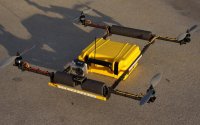http://www.sky-hero.com/downloads/Spyder.pdf (see 1:00 onwards)
It's such a daft idea I had to double-check. It's right there in the build manual. Two ESCs enclosed within each arm - no ventilation at all :dejection:
http://www.sky-hero.com/downloads/Spyder.pdf
I see what you mean.
I found the heat build up on my aquacopter with the esc's and batteries both generating heat to be pretty decent. Not hot but very warm. However I only ever really tested this thing out in spring and never tried it in the heat of summer which would have got worse. I ended up water proofing the esc's and putting them outside the aquacopter but eventually gave up on it because of a few other design issues I had with it.
Surely they would have tested that design and checked the esc temperatures before putting them on the market? I cant imagine they would find the temperature to be acceptable?.

